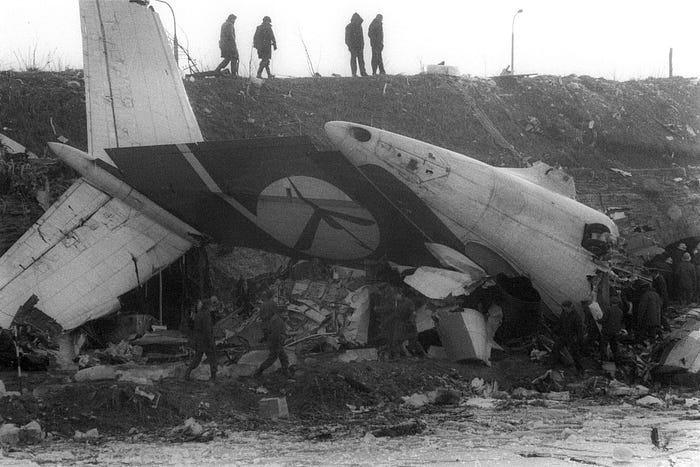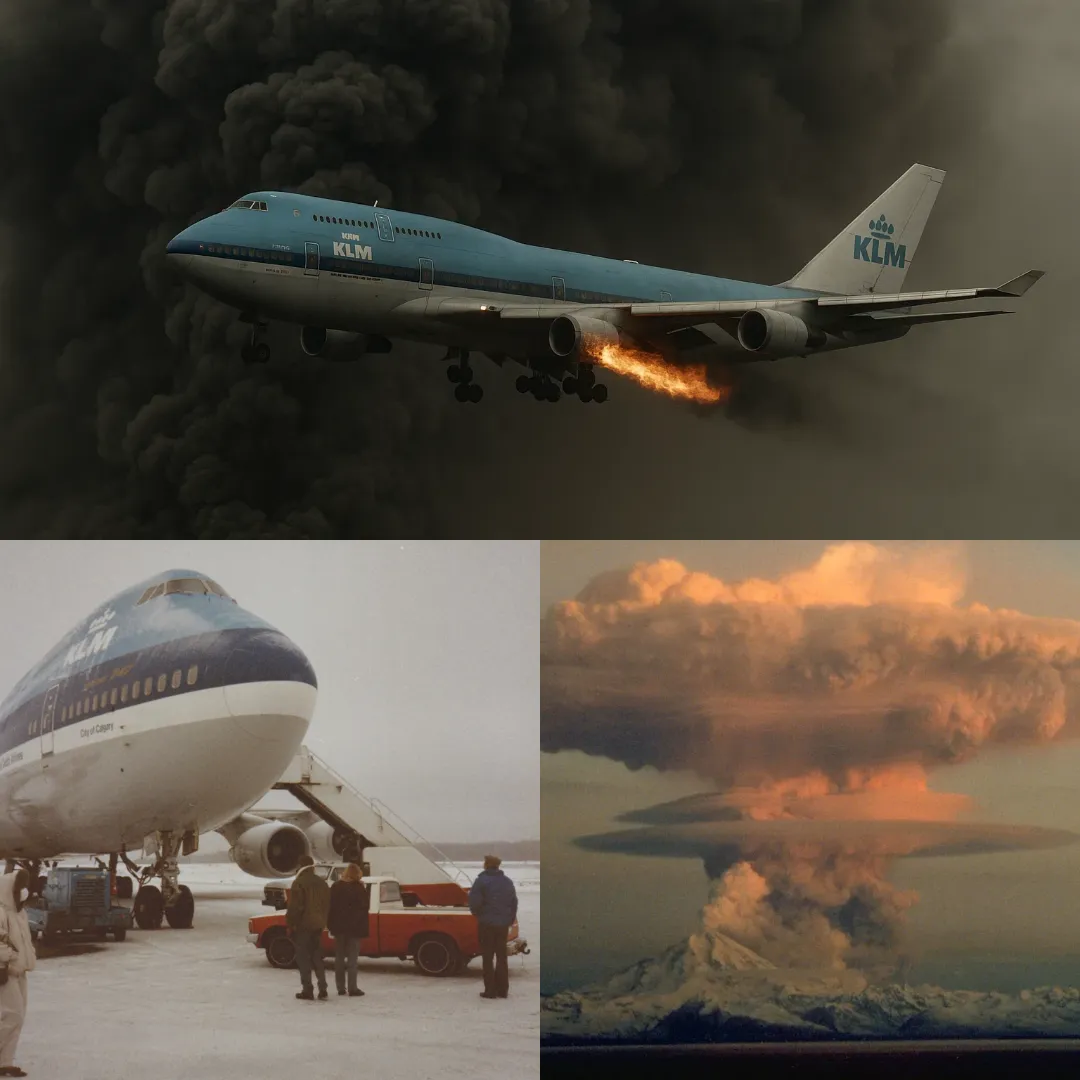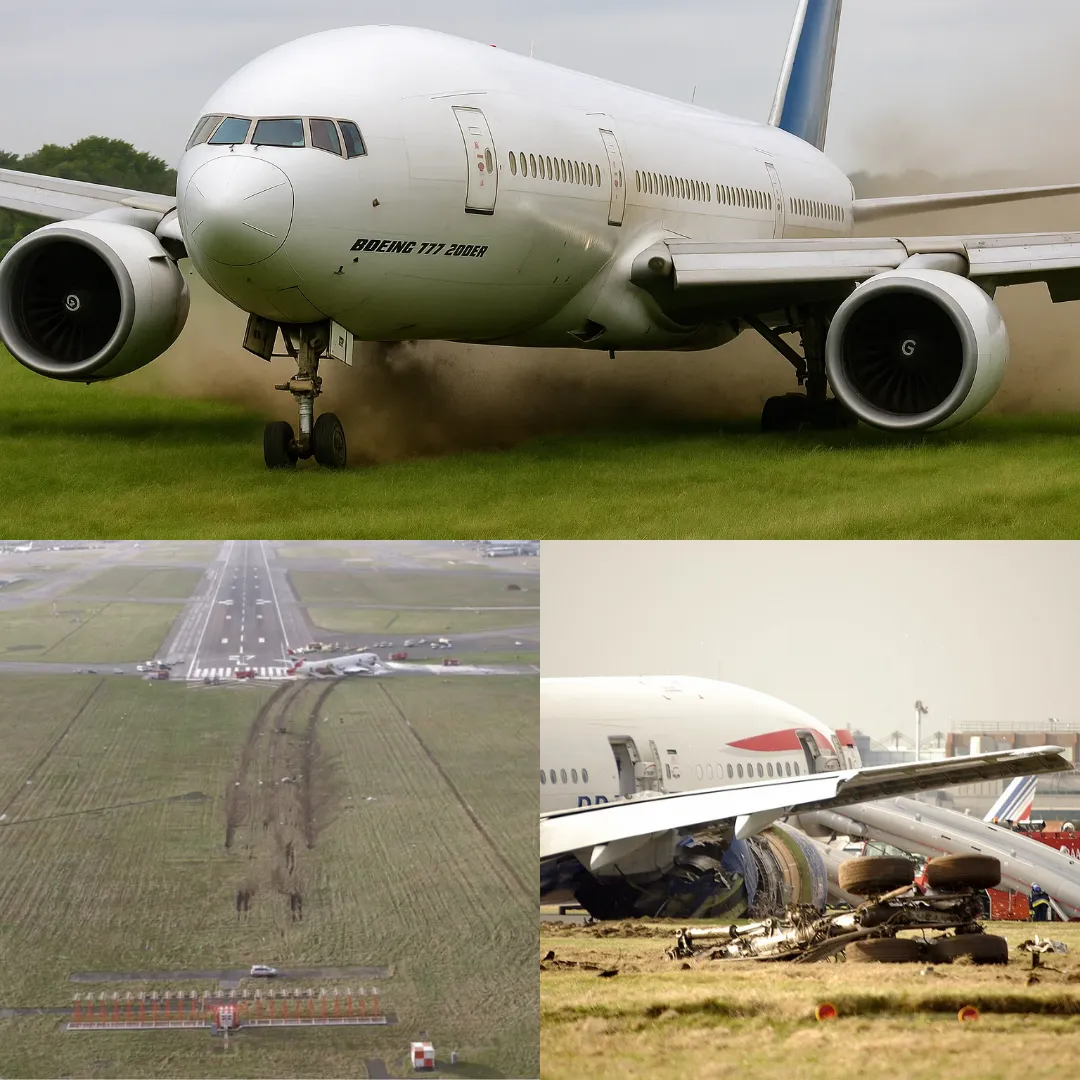
On May 9, 1987, a routine international flight turned into the deadliest aviation disaster in Poland’s history. LOT Polish Airlines Flight 5055, a massive Soviet-built Ilyushin Il-62M jet carrying 183 souls, disintegrated in the skies above Warsaw, leaving behind only smoldering wreckage and unanswerable questions.
What began as a standard flight from Warsaw to New York rapidly spiraled into an airborne nightmare fueled by mechanical failure, fire, miscommunication, and desperate human decisions.
Within just over 30 minutes of takeoff, the aircraft had become a flying coffin. It was a catastrophe that unfolded in plain view of air traffic controllers, with pilots battling smoke, failing controls, and a race against time while terrified passengers scribbled goodbye notes and screamed into recorders. Every second was a countdown to doom.
At precisely 10:18 AM local time, Flight 5055 left the runway of Warsaw’s Frederic Chopin Airport, carrying 172 passengers and 11 crew members aboard an Ilyushin Il-62M. Among them was a lucky last-minute passenger who had been detained at customs for failing to declare a fur coat but made it on board.
The captain, Zygmunt Pawlaczyk, was an experienced pilot with more than 19,000 flight hours, 5,542 of which were logged on the very same model of aircraft.
The plane had been christened Tadeusz Kosciuszko, in honor of a national Polish hero. The jet appeared to take off without incident, climbing quickly and efficiently under guidance from air traffic controllers.

But just 20 minutes later, everything changed. Without warning, the aircraft’s number two engine exploded violently, spraying molten metal through the fuselage.
One red-hot fragment punctured the cargo hold, igniting a fire that would seal everyone’s fate. The force of the explosion also severed the main flight control cables and compromised the number one engine.
The plane began to depressurize rapidly. Inside, cabin items were hurled by the sudden pressure loss, while a fire began to burn out of sight beneath the floor.
The cockpit lit up with warnings. Pilots had no control over key stabilizing surfaces. Fire alarms screamed. The plane was losing altitude and operating with just two of four engines.
The cockpit crew issued a Mayday call as they tried to stabilize the jet and reassure passengers through the cabin crew. But their nightmare had only begun. Unlike Western aircraft, Soviet planes like the Il-62M lacked oxygen masks for passengers, forcing the pilots to dive rapidly to breathable altitudes.
Air traffic control offered them guidance toward an emergency landing site at Gdańsk or Grudziądz, but the flight crew hesitated. The plane was overloaded, having just taken off with nearly full fuel tanks.
A landing attempt could mean catastrophic gear collapse or an uncontrollable fire. The only viable plan was to dump fuel, even as electrical systems started to fail one by one.

At 10:45, Flight 5055 was running on a single generator. The crew turned off all unnecessary systems to save power and struggled with jammed fuel dump valves.
Time was running out, and they were still more than 200 kilometers from Warsaw. With failing hydraulics, broken control systems, and a growing fire underfoot, they began planning a diversion to a small military airfield at Modlin.
But bureaucracy intervened. Modlin required clearance from military authorities. As the minutes ticked away, the pilots waited for a confirmation that never came. Just when it seemed like help was on the way, another explosion rocked the aircraft.
In the rear cabin, passengers panicked. Some ignored instructions and stood up. One elderly woman wrote her last words in a notebook. Others whispered prayers. No one truly knew what was coming, but the smell of smoke and sounds from the rear made it clear that survival was far from guaranteed.
At 10:54, permission finally came to land at Modlin. But it was already too late. The fire had crept into the rear luggage holds and even the tail section. Unbeknownst to the pilots, who were still calmly scanning their instruments, the inferno was already compromising the plane’s structural integrity.
Inside the cockpit, the crew debated whether they should return to Warsaw instead, where they knew the runways and emergency services well. With partial control and unpredictable airspeed, they chose to extend their doomed flight and head back to Chopin Airport.
By 11:08, chaos had fully erupted. Cabin crew could no longer be located. One flight attendant had already been consumed by smoke and fire in the rear. Warning buzzers for fire in the baggage compartments blared—an alarm that meant they had less than five minutes before the flames breached into the cabin itself.
The pilots were now flying blind, with no way to fully control the aircraft and rapidly declining internal systems. The elevators were gone. The trim system barely functioned. They began the final descent toward Warsaw.
But Warsaw was too far. As they neared the city outskirts, fire had melted critical rear control systems. Jet fuel still remained—32 tons of it—because the damaged dump valves never released enough.
The burning jet lumbered forward on sheer willpower, cutting through the air like a mortally wounded beast. Witnesses on the ground reported seeing flaming debris falling from the sky as the aircraft overflew rural villages, descending erratically.
Then, 26 kilometers from the runway, the final horror struck. Fire from the cargo hold breached the rear cabin, and panic erupted. The center of gravity shifted violently as passengers rushed toward the front.
The already-crippled tail structure gave out, causing the nose to pitch down. The plane entered a steep, uncontrolled dive. Black boxes recorded only a few final clicks—someone in the cockpit repeatedly tapped the microphone. Four clicks. Then silence. A male voice came through, trembling with fear: “Good night. Goodbye. Goodbye. We are dying.”

At 11:12:10 AM, Flight 5055 slammed into the Kabaty Forest outside Warsaw at 475 km/h. The aircraft shattered into hundreds of pieces and burst into a towering fireball. The explosion was so powerful that it stripped trees bare and scattered body parts across acres of forest. Rescue teams rushed in, but there was no one to save.
All 183 on board perished instantly. It was a total annihilation. A massive crater remained, filled with twisted metal, smoking fuel, and ashes of the passengers who only an hour earlier had boarded a plane with hope.
The aftermath was one of national mourning and rage. Polish authorities launched a full investigation, revealing that the root cause was a catastrophic bearing failure in engine number two. The Soviet design had no safeguards for such a scenario.
Debris had ruptured control systems and ignited a fire that raged uncontrollably beneath the passengers’ feet. Worse yet, the cargo hold lacked fireproof insulation and was filled with highly flammable materials, including duty-free alcohol and wooden floor panels. The plane’s systems failed one by one as the crew fought to stay alive.
This wasn’t even the first time. Seven years earlier, another LOT Il-62 crashed in similar circumstances, killing 87. The parallels were horrifying. After the 1987 disaster, LOT swiftly removed the Il-62 from service and replaced them with American Boeing 767s, whose GE engines didn’t suffer from the same design flaws.
A memorial now stands at the site in the Kabaty Forest. Though time has passed, the voices of Flight 5055—terrified, brave, and doomed—remain burned into Polish memory. Captain Pawlaczyk and his crew fought until the very end, doing everything humanly possible to save their passengers. But in the end, the fire was faster than hope.



-1750690645-q80.webp)
